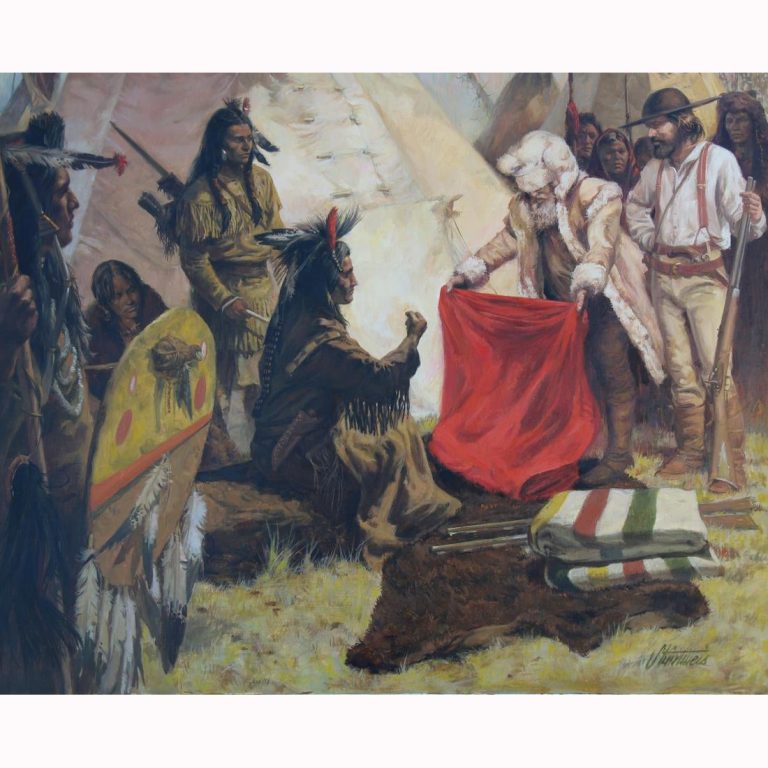Shannon Stirnweis (B 1931)

Shannon Stirnweis (Arizona, New York, New Hampshire, Oregon, B. 1931) “Indians Trading Buffalo Robes with Settlers” Signed lower right. Oil on Illustration Board. Provenance: Collection of James A. Helzer (1946-2008), Founder of Unicover Corporation.
This painting originally appeared in the Fleetwood Trails West Collection of Fine Art Prints as “Fur Trading Claims a Land” published in 1983.
In the beginning, the forests, mountains and plains of the West were heavily populated with black bear, grizzlies, wolves, antelope, deer, elk, moose, cougar, otter, marten, mink, beaver, buffalo and myriad other species. The Indians, for the most part, killed only the game they needed. At the same time, they felt a spiritual kinship to the animals they hunted. The white intruders, however, seemed to believe that all animals existed only to be killed. That attitude often led to bitter confrontation with the Indians, who had difficulty understanding the concept of killing animals for profit. Around 1806, John Colter became one of the first Americans to seriously engage in the business of trapping beaver. The North West Company and the Hudson’s Bay Company existed only to fill the worldwide demand for beaver hats and ornamental furs. But by the late 1830s, the fur trade had fallen into decline due to over-trapping and changes in fashion. There was, however, another resource waiting to be tapped — the buffalo. The early pioneers found vast numbers of these magnificent beasts. “Some grazing quietly on the prairies,” wrote an 1843 traveler, “and others marching and moving and bellowing, and the great herds making a roaring noise as they trampled along, a half mile or a mile away.” Standing six feet high at the shoulder and weighing up to 2,000 pounds, the buffalo was hunted for its meat, but primarily for its hide, until, by the end of the 19th century, they were all but extinct.
Image Size: 17.5 x 20.5 in.
Overall Size: 24 x 26.25 in.
Click here to print.
go back
